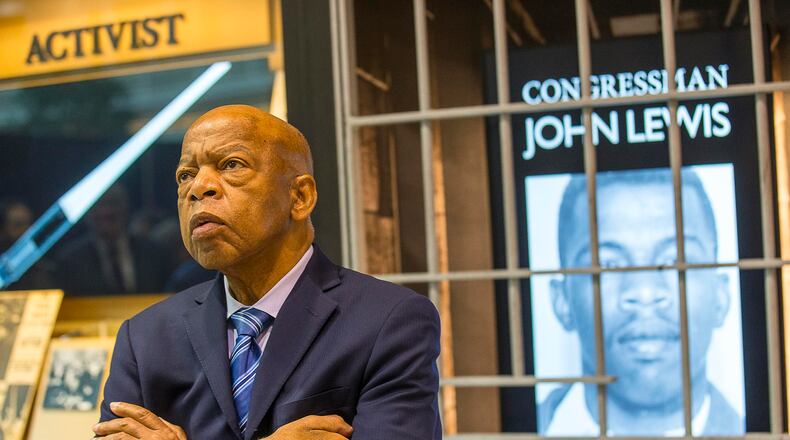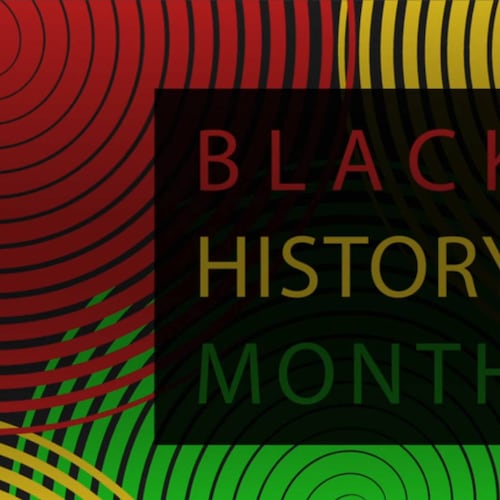In his 80 years, first as a Civil Rights Movement leader, then as a powerful longstanding member of Congress, John Lewis created a lot of “good trouble.”
Befitting a man of his stature, he also created a long paper trail of documents, letters, notes and journals.
On Wednesday, Georgia Senators Jon Ossoff and Raphael Warnock jointly announced they have helped secure nearly $600,000 in federal funding for the John and Lillian Miles Lewis Foundation. The funds will help digitize and protect all of the documents Lewis created during his 34 years as a member of the United States House of Representatives.
“Congressman Lewis’ lifelong commitment to civil rights, nonviolence, and universal human dignity remain essential to local, national, and global progress,” Sen. Ossoff said. “No one’s ideas or approach to public life have had more of an impact on me than Congressman Lewis. It’s imperative we protect and preserve Congressman Lewis’ teachings and records to help inspire future generations and to protect his legacy.”
Credit: Steve Schaefer
Credit: Steve Schaefer
The funding is part of this year’s bipartisan government funding package. The $595,000 package will help preserve and showcase invaluable documents and materials left by Lewis, who served in the United States House of Representatives for Georgia’s 5th congressional district from 1987 until he died in 2020 at the age of 80.
“Congressman Lewis used to always say ‘Use me for good,’” said Michael Collins, Lewis’ former chief of staff and board chairman of the John and Lillian Miles Lewis Foundation. “That is exactly what we are doing with this project.”
Credit: AP
Credit: AP
Like the works of others, the digitization of Lewis’ congressional papers will make it easier for students, historians, and academics to study and explore his thinking, and his development around civil rights, social justice, equality, politics, and governing.
“Dad did so much, in so many ways for so many,” said Lewis’ son, John-Miles Lewis. “Students, researchers, activists and policymakers can learn from this collection of materials what he tried to do and why, as well as what he was able to accomplish and how.”
Credit: Barry Williams/Special
Credit: Barry Williams/Special
Detria Everson, the president and CEO of the Lewis Foundation, said more than 400 boxes of Lewis’ papers, including calendars, speeches, photographs and notes, are currently being housed at the National Archives.
“We are excited because we don’t know what we are going to find,” said Everson, who has been on the job less than a year. “But we do know there are going to be great treasures.”
Everson said archiving Lewis’ civil rights work will not be included in the funding but added that the foundation still has the papers and will work in funding to preserve them as well.
Credit: J. Scott Applewhite
Credit: J. Scott Applewhite
“This is just the beginning,” she said. “We are proud to carry his work forward and get into what Congressman Lewis called ‘good trouble, necessary trouble’.”
In 1963, by the time a 23-year-old Lewis joined Rev. Martin Luther King Jr. on the steps of the Lincoln Memorial to deliver a speech at the March on Washington, he had already established himself as one of the Civil Rights Movement’s brightest young stars.
“The Boy from Troy,” as King called him, had worked his way through the Nashville Student Movement and was one of the original Freedom Riders as a member of the Student Nonviolent Coordinating Committee.
On March 7, 1965, King chose him and Hosea Williams to lead more than 600 marchers over the Edmund Pettus Bridge from Selma to Montgomery.
On the day that would become known as “Bloody Sunday,” Alabama State Troopers met the marchers and ordered them to disperse. As Lewis and the others stopped to pray, the police discharged tear gas, and troopers on horses and foot charged the demonstrators, beating them with nightsticks.
Credit: AP file
Credit: AP file
Images of Lewis, wearing a tan trench coat and backpack, being beaten and trampled, became iconic. A trooper fractured his skull, and Lewis later said he thought he was going to die there.
On the night before presiding over Lewis’ funeral, Warnock, who is also the senior pastor of Atlanta’s Ebenezer Baptist Church, asked himself what Lewis might have been thinking as he tried to cross the Edmund Pettus Bridge.
“Certainly, he was just trying to stay alive so he could live and fight another day,” Warnock said. “But somehow, by some stroke of grace, mingled with human determination, he managed to cross a bridge and build a bridge to the future at the same time.”
It was a turning point.
A week later, President Lyndon Johnson addressed a televised joint session of Congress and called on lawmakers to enact expansive voting rights legislation. He concluded with the words “We shall overcome,” the title of a song adopted by the Civil Rights Movement.
Credit: Alyssa Pointer
Credit: Alyssa Pointer
Two days later, the Voting Rights Act of 1965 was introduced in Congress, and on Aug. 6, 1965, five months after Bloody Sunday, in the same room where Abraham Lincoln signed the Emancipation Proclamation, Lewis watched Johnson sign it into law.
“He is one of Georgia’s greatest sons and he taught us all how to make ‘good trouble,’” Warnock said. “Which is why I was proud … to work with Sen. Ossoff to secure these federal funds for the John and Lillan Miles Lewis Foundation so that future generations may learn and benefit from the lessons of his life and his tireless work to advance democracy, equality and justice.”
About the Author
Keep Reading
The Latest
Featured









